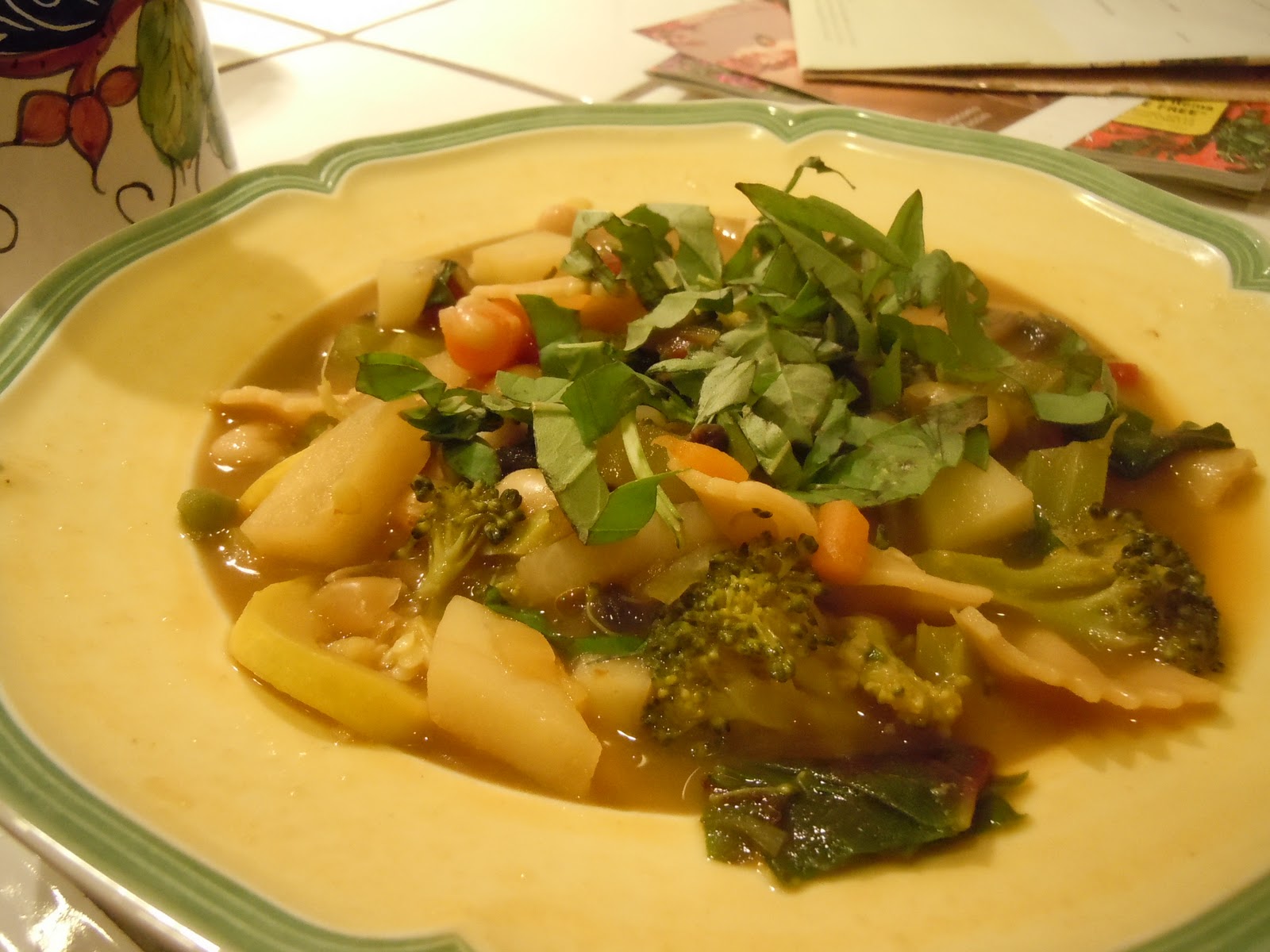As a cook, I have a significant limitation. Or, rather, a blind spot. I don't like tomato soups. Or tomato sauces.
I can hear the hisses now.
I know, I know, I've been told thousands of times just how wrong I am, how *amazing* tomato soups are. I would like to believe you. Lord knows, I've tried the so-called "best" tomato soup hundreds of times. And yet? Well, I haven't been bowled over. So needless to say, minestrone soup has never been on my top ten of favorite soups. Too much tomato.
But then, as if by magic, the Guardian realized the horrors of my minestrone-less lifestyle and compensated accordingly. In their regular column on how to make the "best of" anything, Felicity Cloake featured a minestrone recipe that was tomato-free!! And to call it the *best* minestrone recipe...well, obviously I was immediately on board.
And, well, it was. It was the best minestrone soup ever. Easy, light, but perfect for cold winter nights. The best part was you could substitute any vegetable you had at hand in the recipe. So the soup changes with the seasons and with your whims. Perfect.
The secret glory to this soup is the Parmesan rind. Throw it in with the broth and you'll create the most wonderfully rich broth. Thicker than just a standard vegetable or chicken broth, the rind infuses the broth with a great hint of cheesiness (of course, adding Parmesan on *top* of the soup at the end also doesn't hurt).
Don't feel obliged to stick to the vegetables below. These just happened to be what I had on hand that evening. But, at the very least, I highly recommend some spinach, pasta, beans and the potato. Together they give a great variety to the soup. But experiment with any of your favorite veggies. You almost can't go wrong.
Serves 4
Ingredients
3 tbsp olive oil, plus extra to serve
1 onion, chopped
1 clove of garlic, crushed
2 carrots, cut into 1cm dice
2 sticks of celery, cut into 1cm dice
Seasonal vegetables of your choice (at the moment, 2 summer squash, diced, handful of fresh or frozen peas or broad beans, half a head of broccoli, diced, a large bunch of Swiss chard, shredded)
1.5l good quality chicken stock
1 Parmesan rind
1 potato, cut into 2cm dice
100g cooked and drained cannellini beans (or one can)
200g pasta (any variety, but I like bow ties in particular)
Grated Parmesan and a few basil leaves, to serve
1. Heat the oil in a heavy-based pan and add the onion and garlic. Soften over a medium heat for 5 minutes, without allowing them to colour, then add the carrots and soften. Repeat with the celery.
2. Add the rest of the seasonal vegetables in order of cooking time (zucchini and broccoli will take longer than peas or fresh beans for example) and allow to soften slightly – they don't need to cook through at this point. Stir in the potato.
3. Add the stock, the beans, the Parmesan rind, and pasta. Bring to the boil, then turn down the heat and simmer for about 15 minutes until the potato and pasta are cooked. Season to taste.
4. Serve with a drizzle of olive oil, a grating of parmesan and some torn basil leaves.
This soup is also fabulous as a leftover. Reheat and add more stock to loosen it up.







